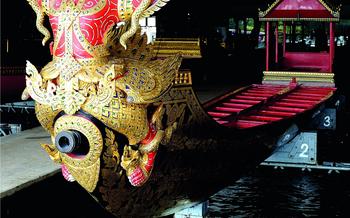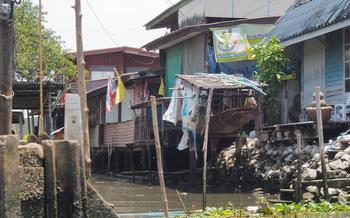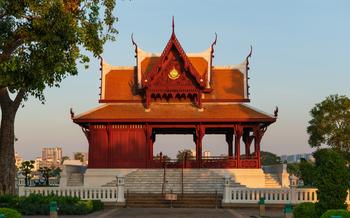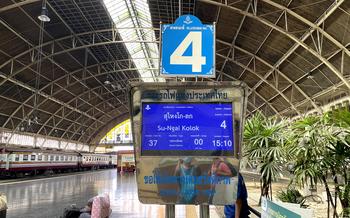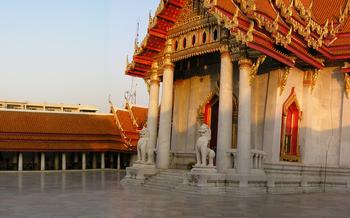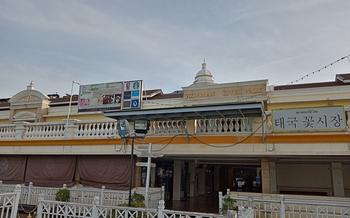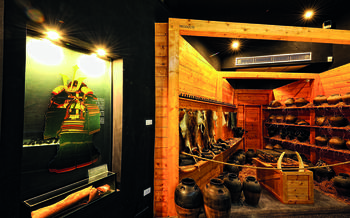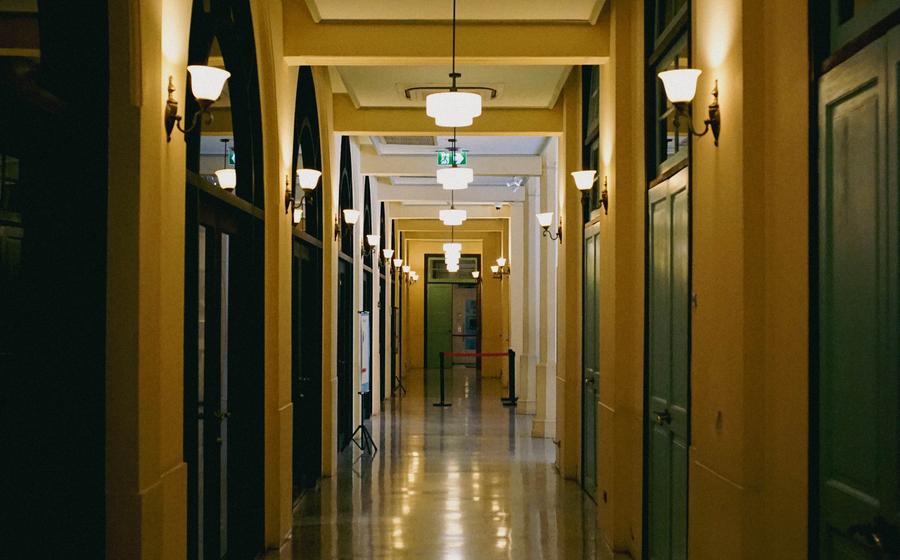
Siriraj Medical Museum
- Siriraj Medical Museum: A Historical Journey Through Medicine
- The Human Body Gallery
- Forensic Medicine Exhibits: A Chilling Insight into Crime and Violence
- The Parasitology Museum
- The Pathology Museum: A Window into the World of Disease
- The Museum of Death
- Forensic Anthropology Gallery: Unraveling the Mysteries of Human Remains
- Forensic Odontology Gallery
- The Medical History Gallery
- The Museum Gift Shop: Unique Souvenirs and Educational Resources
- Guided Tours and Educational Programs
- Photography and Videography Policy
- Accessibility for Visitors with Disabilities
- Insider Tip: Plan Your Visit
Siriraj Medical Museum: A Historical Journey Through Medicine
The Siriraj Medical Museum, located in Bangkok, Thailand, is a fascinating and educational destination that offers a glimpse into the history of medicine and the human body. Established in 1886, the museum is housed within the Faculty of Medicine Siriraj Hospital, the oldest and most prestigious medical school in Thailand. It boasts a unique collection of medical artifacts, specimens, and displays that provide visitors with a comprehensive understanding of the development of modern medicine in Thailand.
The museum's exhibits cover a wide range of topics, from human anatomy to forensic medicine, parasitology, and pathology. Visitors can explore the Human Body Gallery, which features an extensive collection of human body parts and organs, as well as interactive exhibits on anatomy and physiology. The Forensic Medicine Exhibits offer a glimpse into the work of forensic pathologists and criminal investigators, with displays on crime scene recreations, gunshot wounds, and other injuries.
The Parasitology Museum showcases a diverse collection of parasitic organisms from around the world, highlighting their life cycles, transmission, and the diseases they cause. The Pathology Museum provides insights into the causes and effects of various diseases through displays of diseased tissues, organs, and medical specimens. The Museum of Death examines death and dying from various cultural perspectives, exploring funeral customs and rituals from around the world.
The Human Body Gallery
The Human Body Gallery at the Siriraj Medical Museum is a fascinating exploration of the intricacies of the human body. With an extensive collection of human body parts and organs, this gallery provides visitors with a unique opportunity to gain insights into human anatomy and physiology. Through interactive exhibits, visitors can learn about the structure and function of the major organs, explore the effects of diseases and injuries, and gain a deeper understanding of the complex inner workings of the human body.
This gallery is a valuable educational resource for medical students and professionals, offering a comprehensive look at the human body and its systems. It showcases a variety of specimens, including preserved organs, bones, and muscles, as well as interactive displays that illustrate the functions of the body's organs and systems. Visitors can explore the gallery at their own pace, or join a guided tour to learn more about the exhibits from a knowledgeable guide.
The Human Body Gallery is not just a collection of specimens, but also a place to learn about the human condition. It offers a unique perspective on the fragility and resilience of the human body, and encourages visitors to appreciate the importance of health and well-being. Whether you are a medical professional, a student, or simply someone with a curiosity about the human body, this gallery is sure to leave a lasting impression.
Forensic Medicine Exhibits: A Chilling Insight into Crime and Violence
Delve into the realm of forensic medicine at the Siriraj Medical Museum, where crime scene recreations and forensic evidence displays offer a sobering glimpse into the darker side of human nature. Witness the meticulous examination of gunshot wounds, blunt force trauma, and other gruesome injuries, gaining a profound understanding of the work conducted by forensic pathologists and criminal investigators.
These exhibits serve as stark reminders of the consequences of violence and crime, highlighting the tireless efforts of forensic experts in unraveling mysteries and seeking justice for victims. They provide a unique perspective on the intersection of medicine and law, underscoring the vital role of forensic science in modern society.
Key Exhibits:
-
Crime Scene Recreations: Immerse yourself in realistic crime scene scenarios, examining evidence such as bloodstains, fingerprints, and weapons.
-
Forensic Pathology: Witness the examination of human remains, learning about autopsy techniques and the determination of cause of death.
-
Ballistics: Explore the science of firearms and ballistics, including the analysis of gunshot wounds and trajectory patterns.
-
Toxicology: Investigate the effects of poisons and drugs on the human body, understanding the role of toxicology in criminal investigations.
-
DNA Analysis: Discover the groundbreaking techniques of DNA profiling and their significance in criminal identification and exoneration.
The Parasitology Museum
The Parasitology Museum at Siriraj Medical Museum is a fascinating and educational journey into the world of parasites. Here, you'll discover a diverse collection of parasitic organisms from around the world, including protozoa, helminths, and arthropods. Interactive displays bring to life the life cycles and transmission of these parasites, shedding light on how they affect human health. Learn about the devastating impact of parasitic diseases such as malaria, schistosomiasis, and hookworm, and gain insights into the importance of public health measures in controlling these infections. This museum serves as a valuable resource for medical students, researchers, and anyone interested in the field of parasitology.
The Pathology Museum: A Window into the World of Disease
The Pathology Museum at Siriraj Medical Museum offers a comprehensive exploration of the human body's response to disease. Through a series of fascinating exhibits, visitors can delve into the causes, effects, and treatments of a wide range of illnesses and medical conditions.
The museum's collection includes a vast array of diseased tissues, organs, and medical specimens, each carefully preserved and displayed to provide visitors with a unique perspective on the human body's resilience and vulnerability. Interactive displays and detailed explanations help visitors understand the complex mechanisms of disease and the impact they can have on our physical and mental well-being.
The Pathology Museum also highlights the crucial role of pathology in medical diagnosis and treatment. Visitors can learn about the techniques used by pathologists to examine tissue samples, identify disease markers, and determine the best course of action for patients. This section of the museum provides valuable insights into the behind-the-scenes work that goes into ensuring accurate diagnoses and effective treatments.
Overall, the Pathology Museum offers a thought-provoking and educational journey into the world of disease. It encourages visitors to appreciate the complexity of the human body and the importance of early detection and prevention in maintaining good health.
The Museum of Death
The Museum of Death confronts the inevitable reality of mortality with a thought-provoking collection of exhibits exploring death and dying from various cultural perspectives. It delves into the physical and emotional aspects of death, examining cultural rituals, funeral customs, and societal attitudes towards mortality. Displays showcasing different death rituals and practices from around the world provide a glimpse into the diverse ways in which cultures have grappled with the universal experience of death. The museum encourages visitors to reflect on the significance of death and its impact on human life, shedding light on the universality and inevitability of this shared human experience.
Forensic Anthropology Gallery: Unraveling the Mysteries of Human Remains
Delve into the fascinating realm of forensic anthropology at the Siriraj Medical Museum, where the secrets of human skeletal remains are revealed. This captivating gallery showcases the intricate examination of bones, providing valuable insights into the lives and deaths of individuals. Learn how forensic anthropologists determine age, sex, and ancestry from skeletal structures, unraveling the mysteries surrounding human identity.
Witness the meticulous techniques used to analyze bone fragments, revealing clues about past injuries, diseases, and trauma. Explore the role of forensic anthropologists in criminal investigations, where skeletal evidence plays a crucial role in identifying victims of accidents, crimes, and mass disasters.
Through interactive exhibits and informative displays, the Forensic Anthropology Gallery invites visitors to explore the complex world of human osteology and its significance in legal and historical contexts. Gain a deeper understanding of the human body and the remarkable work of forensic anthropologists, who help bring justice to victims and closure to their families.
Forensic Odontology Gallery
The Forensic Odontology Gallery delves into the fascinating field of forensic odontology, which plays a crucial role in human identification. This gallery showcases the importance of teeth in forensic investigations and demonstrates the techniques used to analyze them.
Exhibits in this gallery include:
-
Dental Age Estimation: Learn how forensic odontologists determine the age of individuals based on their teeth, which can be particularly valuable in cases involving unidentified remains.
-
Bite Mark Analysis: Discover the methods used to analyze bite marks found at crime scenes, which can provide valuable evidence in assault and murder cases.
-
Identification of Missing Persons: Explore how dental records are used to identify missing persons, even in cases where the remains are badly decomposed or disfigured.
-
Case Studies: Examine real-life case studies that highlight the crucial role of forensic odontology in criminal investigations, showcasing the expertise and dedication of forensic odontologists.
Through interactive displays and informative panels, the Forensic Odontology Gallery provides visitors with a comprehensive understanding of this specialized field and its significance in forensic science.
The Medical History Gallery
The Medical History Gallery at the Siriraj Medical Museum provides a fascinating journey through the evolution of medicine in Thailand and the surrounding region. It showcases the rich history of traditional healing practices, highlighting the knowledge and skills of ancient healers and the use of herbal remedies. Visitors can explore displays on the development of modern medical institutions and practices, including the establishment of the first medical school in Thailand and the introduction of Western medicine. The gallery also examines the role of medical education and research in advancing healthcare, showcasing the contributions of renowned Thai physicians and scientists. Through interactive exhibits and informative panels, the Medical History Gallery offers a comprehensive understanding of the historical foundations of modern medicine in Thailand and its impact on the region's healthcare system.
The Museum Gift Shop: Unique Souvenirs and Educational Resources
The Siriraj Medical Museum gift shop is a treasure trove of unique souvenirs and educational materials for visitors of all ages. Here, you can find a wide range of items, including books on medical history, posters featuring anatomical illustrations, and replicas of medical artifacts. Whether you're looking for a memento of your visit or a thoughtful gift for a friend or family member, the museum gift shop has something for everyone.
Proceeds from the gift shop directly support the museum's educational programs and initiatives, ensuring that this valuable resource continues to provide enriching experiences for visitors from around the world. By purchasing a souvenir from the gift shop, you can contribute to the museum's mission of promoting medical education and awareness.
Among the popular items available in the gift shop are intricately detailed models of human organs, perfect for medical students or anyone interested in human anatomy. You can also find a variety of books on medical history, covering topics such as the development of modern medicine in Thailand, the role of traditional healing practices, and the latest advancements in medical research.
For those looking for a more unique souvenir, the gift shop offers a selection of replicas of medical artifacts, such as ancient surgical instruments and medical equipment. These replicas are meticulously crafted to provide an authentic representation of the museum's collection, making them a valuable addition to any medical enthusiast's collection.
Whether you're a medical professional, a student, or simply someone with a fascination for the human body and medical history, the Siriraj Medical Museum gift shop is a must-visit. With its diverse selection of souvenirs and educational resources, you're sure to find something that captures your interest and supports the museum's important work.
Guided Tours and Educational Programs
Enhance your visit to the Siriraj Medical Museum by taking advantage of the guided tours and educational programs offered. Experienced guides lead tours in various languages, providing in-depth insights into the exhibits and their historical significance. These tours are particularly beneficial for medical students and professionals seeking a deeper understanding of the medical field.
For groups, customized tours can be arranged to cater to specific interests and educational needs. Schools and community groups can participate in educational programs and workshops designed to engage and inform participants about various medical topics. Advance booking is recommended to secure your spot and ensure the availability of your preferred tour or program.
Photography and Videography Policy
Respecting the Privacy and Dignity of Others
The Siriraj Medical Museum welcomes photography and videography for personal use, as it allows visitors to capture and share their experiences with others. However, it is important to remember that the museum is a place of respect and dignity, and certain guidelines must be followed to ensure a positive and respectful environment for all visitors.
Photography and videography for commercial purposes are strictly prohibited without prior permission from the museum administration. This includes taking photos or videos for advertising, promotion, or any other commercial gain.
Visitors are requested to be mindful of the privacy and dignity of other visitors and museum staff. Taking photos or videos of individuals without their consent is not permitted. It is important to ask for permission before photographing or filming anyone, especially if they are in a vulnerable or sensitive situation.
To avoid disruption to other visitors, tripods, monopods, and other photography equipment are not allowed inside the museum. Visitors are encouraged to use handheld cameras and to be considerate of the flow of visitors while taking photos or videos.
The museum staff is always available to assist visitors with any questions or concerns regarding the photography and videography policy. By following these guidelines, visitors can help ensure that the Siriraj Medical Museum remains a welcoming and respectful environment for all.
Accessibility for Visitors with Disabilities
The Siriraj Medical Museum is committed to providing a welcoming and accessible environment for all visitors, including those with disabilities. Wheelchair ramps and elevators are available to ensure easy access to all floors of the museum, and Braille signage and audio guides are provided for visually impaired visitors. Designated seating areas are available for visitors with mobility challenges, and museum staff is always ready to assist with any special needs. Visitors with disabilities are encouraged to contact the museum in advance to make arrangements for a customized tour or to inquire about any specific accessibility requirements. The museum's commitment to inclusivity ensures that everyone has the opportunity to explore and learn from its fascinating exhibits and displays.
Insider Tip: Plan Your Visit
To make the most of your visit to the Siriraj Medical Museum, it is advisable to plan your trip in advance. Set aside at least two to three hours to thoroughly explore the extensive collection of exhibits and displays. Keep in mind that visiting on a weekday is a strategic move to avoid the weekend crowds and ensure a more intimate experience. Comfortable shoes are a must, as you will be doing a considerable amount of walking. Don't forget to bring your camera to capture the unique and educational exhibits that you will encounter throughout the museum. Embrace the opportunity to document your journey through the fascinating world of medicine and medical history.

